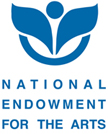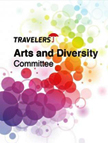Embroidery: Animals |
|---|
 |
EA1: This tapestry depicts wild animals surrounded by two floral vines that form a frame. Such floral vine paj ntaub have traditionally been sewn by young Hmong girls to give to their boyfriends as gifts. Typically, a young girl sewed a pair of birds onto a white towel. A spring or pool of water, elders believe, has mineral and healing proprieties. At the center right is a wild boar whose tusks Hmong believe have magical powers. They are used as charms to protect against illness and from potentially dangerous situations including combat or long trips. The boar is portrayed as a green animal (although it is actually gray or black), because its hair has a blue-green sheen. This piece was made on cotton cloth with cotton embroidery thread in yellow, pink, red, green, and muted colors including brown and black. The technique used involved surface stitching. Two thin borders of gray and white were sewn as frames.
|
Back to Top |
 |
EA2: This paj ntaub depicts wild animals around a pond, in their natural environment. It is springtime with flowers blooming. Pictured animals familiar to the Hmong including a tiger, often found in Hmong folktales and usually associated with bad and evil spirits. At the bottom center, a bush-tailed porcupine, or nploos in Hmong, is eating a yellow fruit. Bush-tailed
Sold by Khoua Thao, Thailand, 2004, 49x49 cm |
Back to Top |
 |
EA3: This piece is another wild animal paj ntaub, with commonly hunted animals pictured, and with the exception of the rhinoceros which is also part of the scene. The Hmong believe the rhinoceros has healing properties. If one is lucky enough, he or she will see this majestic animal roaming in the wild. In the center is a group of deer, eating grass and drinking water from a pond. A pair of quail is heading toward the pool of water, as well as pheasants and other birds. The technique used involved surface stitching. Cotton threads were embroidered onto the surface of the gray cloth, and light blue and dark blue borders were sewn to frame the picture.
|
Back to Top |
 |
EA4: This tapestry portrays a pond scene with wild animals, including two helmeted hornbill birds sitting on tree branches at the upper right. These are large, noisy birds nesting high up in the trees of the Lao jungle. They are difficult to trap. In the center, antelopes, deer, a gaur (or wild bull), and a rhino are facing each other around the pond. The animals are not accurately portrayed. They are distored. The sewing technique used for this paj ntaub involved surface stitching, using cotton thread on a blue cotton cloth. Gray, white, and blue borders form the frame.
|
Back to Top |
 |
EA5: This tapestry shows wild animals, including a wild gaur and an antelope drinking water from a pond. An elephant and a fox, like the boar, are portrayed as green animals, due to the blue-green sheen of their skin or fur. In reality, they are either black or gray. Hmong artists often picture elephants as green. The technique used involved surface embroidery stitching,
Sold by Khoua Thao, Thailand, 2004, 46x46 cm |
Back to Top |
EA6: A pair of birds depicted like this usually symbolizes the love of a couple. They are perched on a branch that has young sprouting blossoms that appear as if they contain nectar. The flowers provide the connotation that the couple’s love is sweet.
By Shong Thor, 1980s, 37x38 cm |
Back to Top |
EA7: This is not a typical Hmong embroidery, but rather unusual because often birds are
By Ia Moua, 1980s, 39x39 cm |
Back to Top |
 |
EA8: This embroidered tapestry depicts the rooster, a very important animal to the Hmong.
Sold by Khoua Thao, Thailand, 1990, 23x26 cm |
Back to Top |
EA9: The pictured animals in this piece are water buffaloes. They are depicted in a fight. Throughout the year, these animals work with farmers in the rice paddies and plow the farm land. However, in the months of November to December, bulls are used for bull fighting in the Hmong New Year celebration as entertainment. Bulls with considerable strength are valuable and are a source of great pride among Hmong men. Darning and running stiches were used in this tapestry. |
Back to Top |
EA10: This animal embroidery book features basic words for animals in three different languages: English, Hmong, and Lao. The embroidery method used involved a type of darning along with running stitches. Cotton thread in vibrant colors was embroidered onto a cotton cloth. The giraffe that is featured is an African animal, but also appears in some Hmong animal paj ntaub pieces.
By Ziag Yaj, Laos, 2012, 14x16 cm
|
Back to Top |
Page 1 >> Page 2 |



